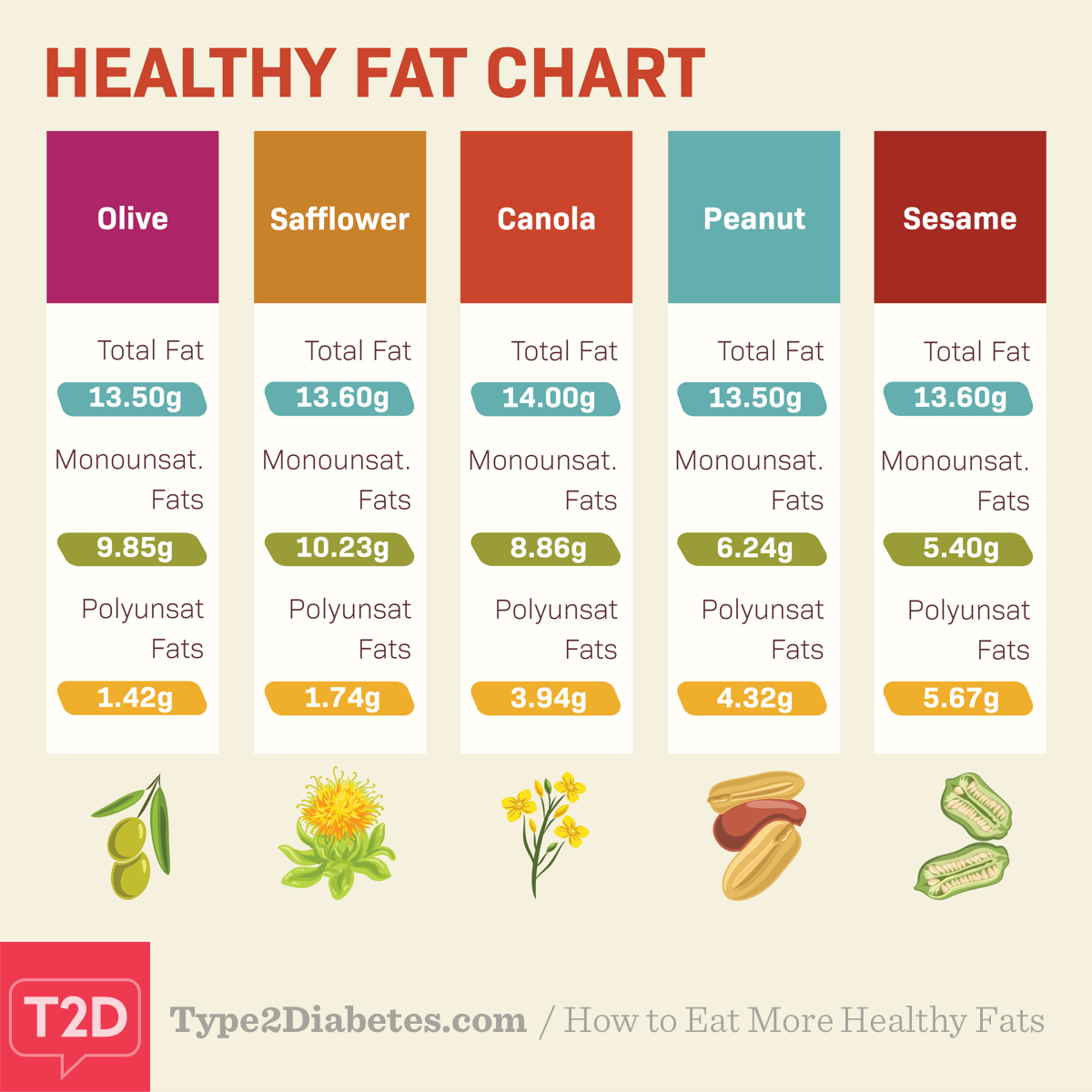How to Eat More Healthy Fats
You've heard it before–eat more of the right kind of fats! But how can you be sure you’re adding the right amounts and keeping a balanced diet? As you boost your healthy fat intake, cut back on overly refined foods, your portions of carbs, and especially animal fats like butter or red meat.
The best healthy fats for type 2 diabetes
So how do you incorporate healthy fats into your diet? Try experimenting with different oils – you just might find a new healthy favorite!
You’re baking me crazy!
Use neutral-flavored canola oil for baking your family favorites instead of butter. But also explore dessert recipes that use fragrant olive oil! You’ll be surprised at how good banana bread is when made with olive oil. Substitute ¼ cup extra virgin olive oil for 1/3 cup of butter. For smaller recipes, replace 1 tablespoon of butter with 2 ¼ teaspoons of olive oil.
You butter be kidding me
Next time you think a classic dish calls for butter – think again. In many cases, olive oil can be just as tasty. For corn on the cob, or even frozen reheated corn, pour olive oil and a bit of salt and pepper instead of butter—it’s delish!
Try stir-frying fresh or frozen veggies in peanut oil to add some health-promoting fats to your dinner. Use a teaspoon or two of olive oil instead of butter to quickly cook up an egg or to sauté some veggies. Instead of frying, use 1-2 tablespoons of olive oil to roast or grill veggies or bake fish and chicken.
The salad flavor savior
Salad dressings are easy to whip up, and olive oil or walnut oil boosts the flavor. In an old, clean glass jar with a tight lid, try shaking up: 4 tablespoons of extra virgin olive oil, 2 tablespoons of balsamic vinegar, 1 tablespoon Dijon mustard, 1 teaspoon of dried parsley and ½ teaspoon of oregano (salt and pepper to taste). This simple dressing is perfect atop any tasty salad. You can also drizzle extra olive oil and balsamic glaze over beefsteak tomatoes –yum!
Snack smackdown
For a simple but elegant snack or appetizer, dip a small slice of whole-grain bread into 1 tablespoon of olive oil with black pepper, dried basil or a dukkah blend. Dukkah is typically a mix of olive oil with sesame seeds, coarsely chopped nuts, and herbs and spices like cumin, pepper, and sea salt used as a flavorful dip.
Or, top hummus with a teaspoon of olive oil to freshen up before it’s ready for dipping! Next movie night, lightly coat or spray popcorn with olive oil, parmesan, and pepper for a savory treat.
For breakfast or an anytime snack, elevate plain Greek yogurt —pour over a good quality olive oil and top with a small amount of honey or sugar substitute and chopped orange. Yes, you heard it right –olive oil and Greek yogurt, don’t knock it until you’ve tried it!
Portion distortion
Use just 1-2 tablespoons of olive oil to prepare meals and for single-serving dishes use less. You’ll have enough to provide the health benefits of the oil without extra calories. Even though olive oil can do the body good, it’s still calorie-dense and should be consumed in moderation.
Fresh is best
All oils age and oxidize – and unlike an aged wine – you want your oils to be fresh! Most oils will be rancid within a year of harvest. Check the date on the label. Whether a best-by date or a harvest date, pick the most recent date available. By law, the US doesn’t require a best-by date, so go with whatever information is available.
Different oils have different fat profiles and their own specific health benefits. Check out the chart below to compare different oils.
*The values in the table above were taken from the USDA National Nutrient Database and rounded to two significant figures (4).


Join the conversation